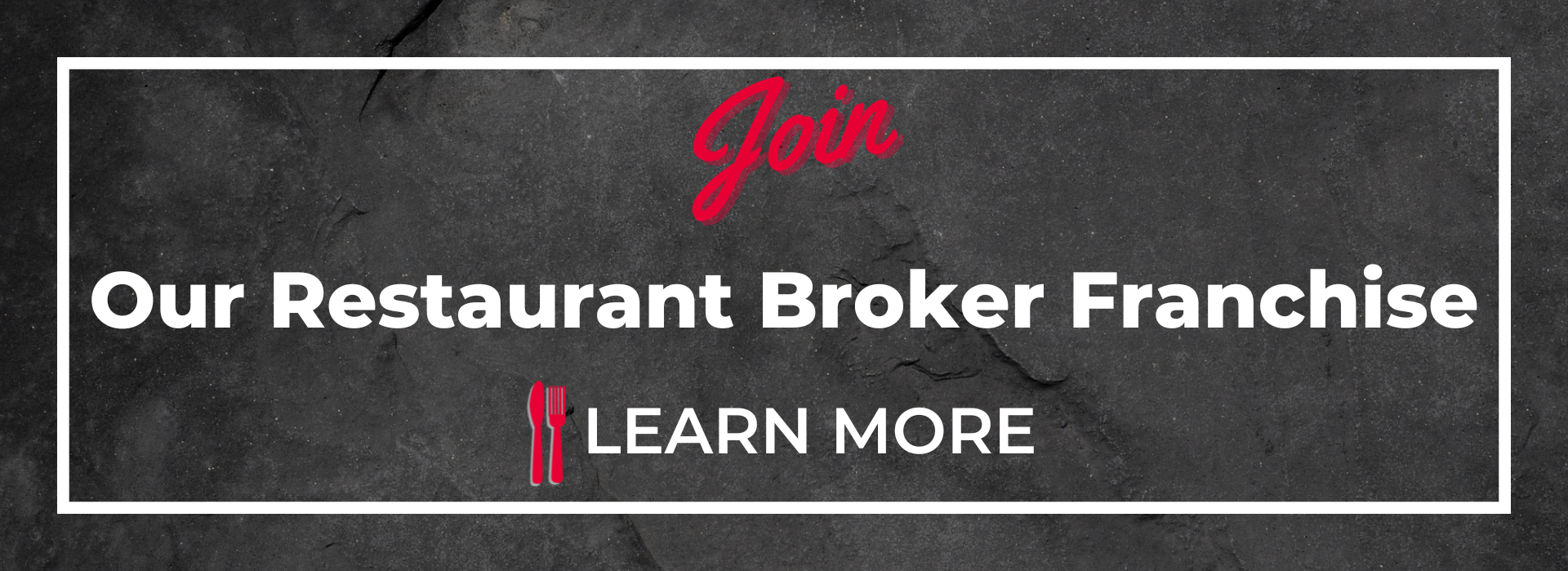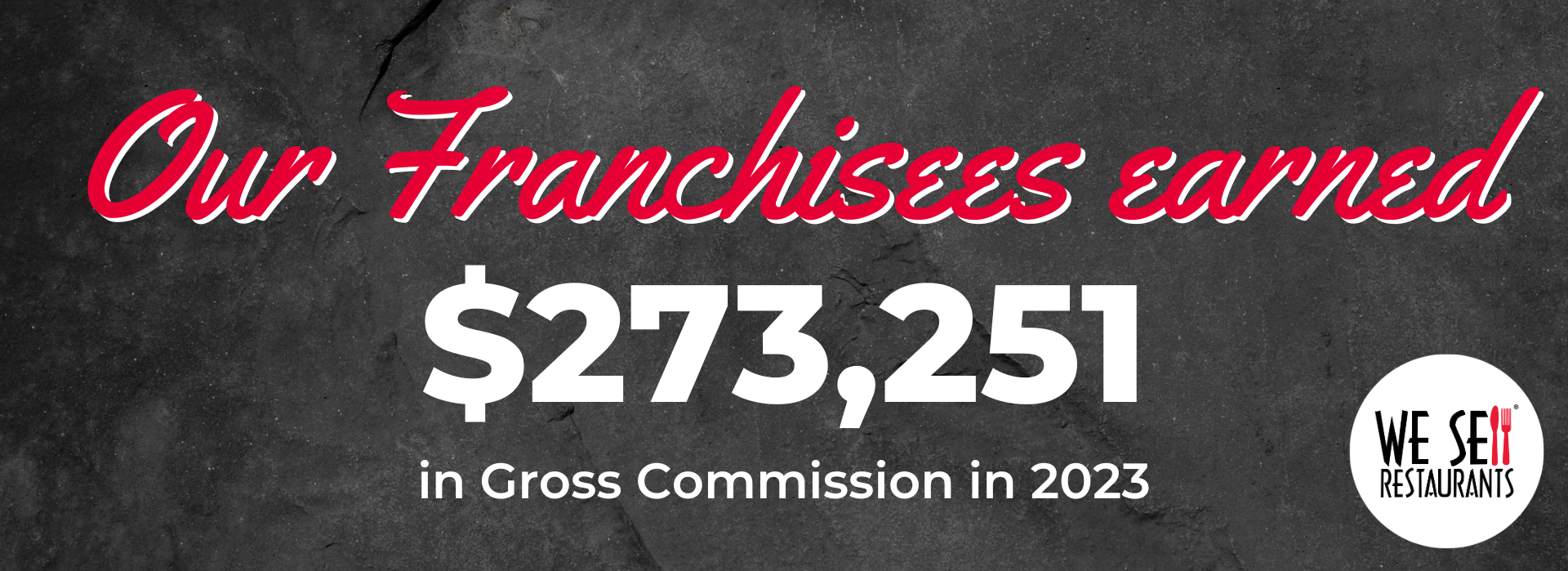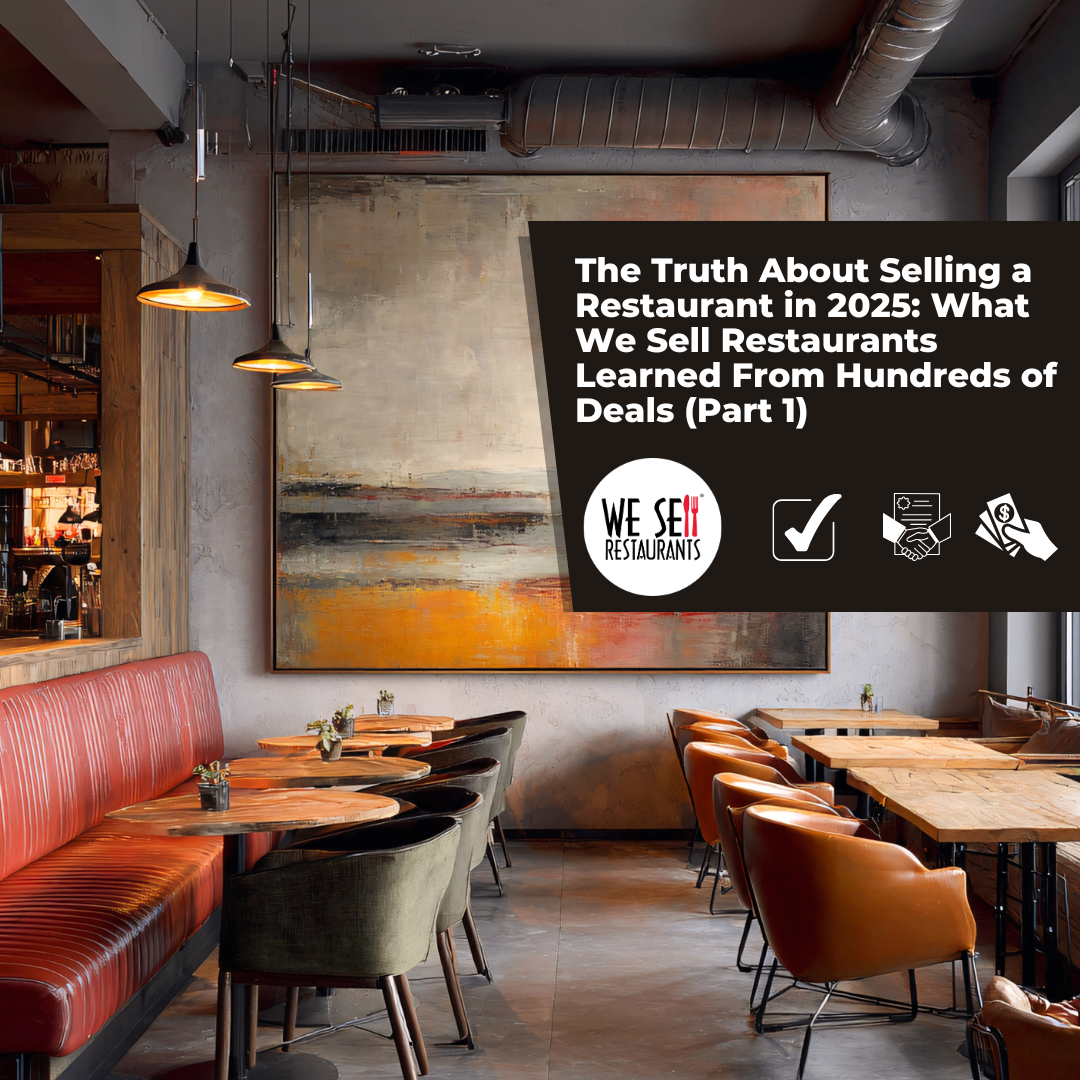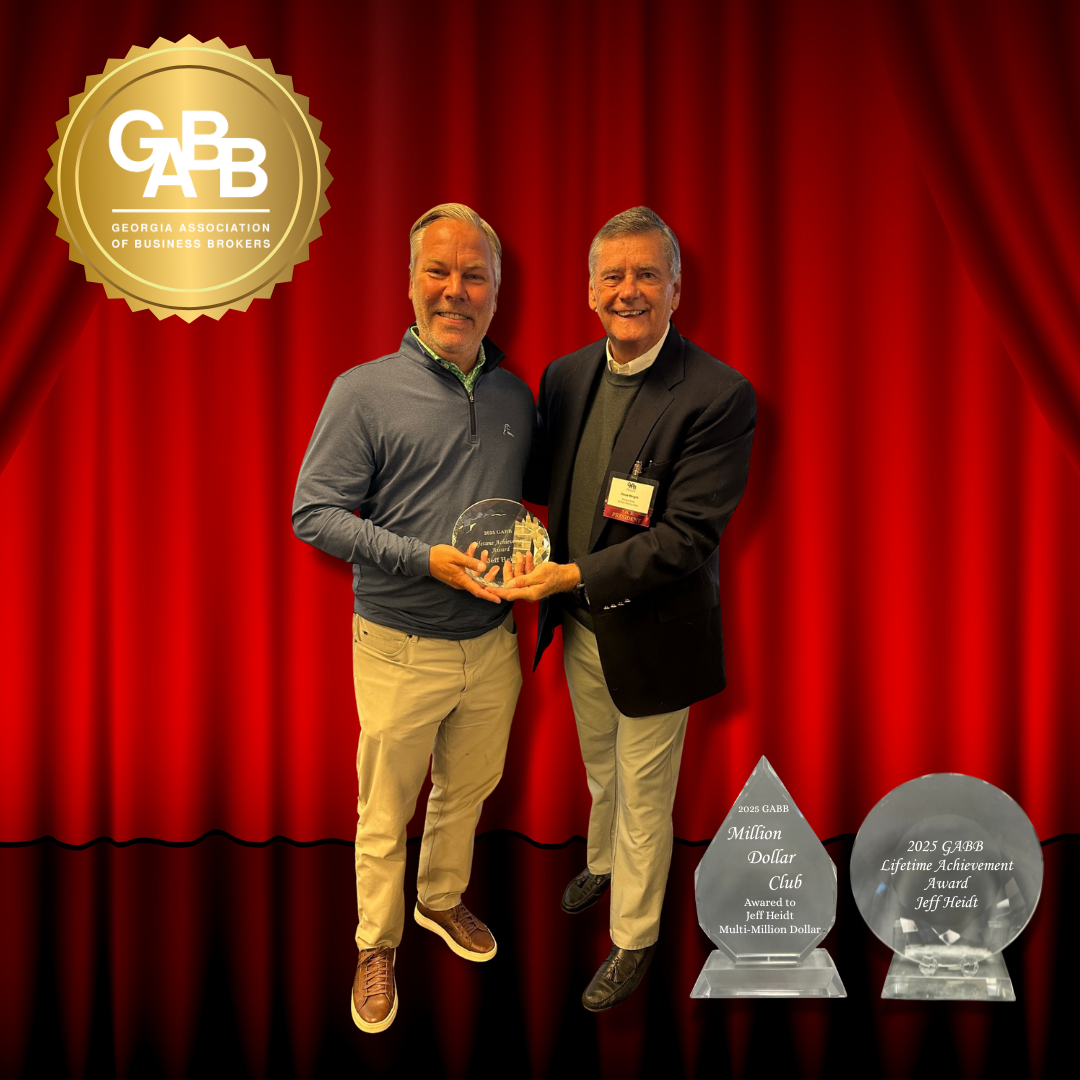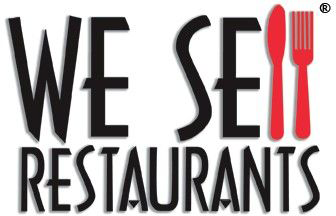As more Americans seek freedom and professional growth, a restaurant business is a familiar entry point for business ownership. The National Restaurant Association tells us the industry is the second-largest private sector source of jobs in the United States with more than 15.5 million employees forecast for sector in 2023. That means that most of us have worked in a restaurant at some point in our lives, either as a part-time or full-time job. I was reminded of this in a meeting yesterday among franchise leaders from all walks of life. Many expressed fond memories of the hospitality business where they gained key skills in customer service, meeting personal obligations, conflict resolution and even, supervision.
The number of restaurants sold in 2022 grew by 20%, outpacing the business for sale marketplace overall. With all this interest, both buyers and sellers want to understand how to fairly calculate the value of a restaurant business. When buying, how can you be sure you are paying a fair price? If you are selling, how do you determine that the value paid is appropriate for the investment and return the business is generating?
Ultimately, the price negotiated between a willing buyer and willing seller sets the price. That is market pricing. However, SBA lending standards set definite hurdles to determine that the price paid is in line with the ability for the business to retire debt and absorb interest rates. SBA lending also requires that all deals be submitted to an external valuation firm, much like a third-party appraisal when buying a house. Thus, since many restaurants are sold with SBA lending, an experienced and expert Certified Restaurant Broker can accurately tell you how to calculate the value of a restaurant business before Selling a Restaurant.
Revenue and Pricing.
Revenue is important for a restaurant but does not determine its value. Two different restaurants, each generating a million dollars in sales a year can be worth much different numbers. Why? Because earnings dictate a restaurant’s value, not its revenue. Consider my example below when looking at two restaurants with identical sales but key differences in the costs that contribute to profitability.
-
-
-
-
-
-
-
-
- Restaurant A has strong management that negotiated a good lease that equates to roughly 9% of sales. Restaurant B did not use a Restaurant Broker to negotiate terms or potentially got TI (tenant improvement) money built into the rent that drives their occupancy to 12% of sales.
-
-
-
-
-
-
-
- Restaurant A manages food costs carefully and makes sure par levels are strictly enforced and portion sizes are controlled. Restaurant B does not manage these cost of goods fundamentals well.
- Restaurant A is controlling salaries and wages, staffing to the needs of the business while Restaurant B has 5% greater costs on the salary line. All other costs (Insurance, Utilities, etc.) are equal.
In the example below, Restaurant A is earning 12.5% on the same revenue as Restaurant B which has earnings of zero. This exemplifies why sales or revenue does not equate to earnings.
|
|
Restaurant A |
|
Restaurant B |
|
|
Sales |
$1,000,000 |
|
$1,000,000 |
|
|
Cost of Goods Sold |
$285,000 |
28.5% |
$330,000 |
33% |
|
Gross Margin |
$715,000 |
|
$670,000 |
|
|
Occupancy |
$90,000 |
9% |
$120,000 |
12% |
|
Salaries and Wages |
$250,000 |
25% |
$300,000 |
30% |
|
All Other |
$250,000 |
25% |
$250,000 |
25% |
|
Net Income |
$125,000 |
12.5% |
0 |
0% |
Calculating the Value of a Restaurant Business
The profit and loss statement represents the starting point for the valuation. The Certified Restaurant Broker performs a financial analysis or recasts the earnings to get to Owner Benefit. This is also referred to as Seller’s Discretionary Earnings or SDE or Seller’s Discretionary Cash Flow or SCDF. This is critical as it is the exact same practice the external valuation resource uses in looking at cash flow available to service debt and thus, confirm the lending and selling price.
The starting point is to get the P&L or tax return recast to EBITDA or Earnings Before Interest, Taxes and Depreciation. These items do not apply to a new buyer so these expenses on the books are essentially stripped out.
Then the Restaurant Broker will also recast expenses that are part of the overall owner benefit. These are any expenses that go away when the owner leaves the business and could include things like:
- Owner Personal Travel
- Owner Personal Cellphone
- Manager’s Salary if business is absentee
- Owner Automobile Lease
- Owner W2 or 1099 Income
- Owner Management Fee charged to the business
- Owner 401K or other pension plan expense
Lastly, the restaurant broker will look at any one-time or non-recurring expenses. Did anything out of the ordinary happen in the restaurant business that would affect the numbers in the profit and loss statement or tax return. Examples might include on the income side:
- One-time income from a grant associated with the pandemic
- Insurance settlement for a closure related to a storm or hurricane
- EIDL or PPP influx of funds (note – these should be balance sheet loan items, but we have seen these booked to income statements incorrectly)
- Under-market rent because of rent abatement, owner occupied building or negotiated (short-term) rates
The Restaurant Broker must look at each item and analyze its impact on the ongoing operation and if it is material, remove this income before assessing the value. Then he or she must do the same thing for the expense side. Examples of one-time expenses could include:
- Accounting fees for a year where tax credits were sought, or an audit was performed
- Legal fees for a one-time situation (settling of lawsuit or similar)
- Repair and maintenance for singular event (roof repair, cooler replacement)
SDE versus EBITDA
As this article thoroughly explains, Seller’s Discretionary Earnings or SDE and EBITDA are not the same number. EBITDA is simply earnings with the add back of the following:
- Interest
- Taxes
- Depreciation
- Amortization
Seller’s Discretionary Earnings can include add backs of any benefit to the owner and relies heavily on the management structure. It is impossible to recast to Seller’s Discretionary Income without know who is operating the business and how they are being paid, thus a comparison of EBITA and SDE is shown in the chart below, shows that SDE will in almost all cases, be significantly higher.
Let’s go back to our earlier example of Restaurant A and Restaurant B and see what happens when we apply add backs to get to SDE or Seller’s Discretionary Income. In the first example, you can see that Restaurant A is outperforming Restaurant B based on the fundamentals. If we expand this to include add backs and provide details for the “all other,” this outcome can change when we add back depreciation and interest and recast to EBITDA.
In this instance, the “all other” now includes some add backs of depreciation and interest. Thus, EBITDA for the example is now shown below:
|
|
Restaurant A |
|
Restaurant B |
|
|
Sales |
$1,000,000 |
|
$1,000,000 |
|
|
Cost of Goods Sold |
$285,000 |
28.5% |
$330,000 |
33% |
|
Gross Margin |
$715,000 |
|
$670,000 |
|
|
Occupancy |
$90,000 |
9% |
$120,000 |
12% |
|
Salaries and Wages |
$250,000 |
25% |
$300,000 |
30% |
|
All Other |
|
|
|
|
|
Depreciation |
$0 |
0% |
$75,000 |
7.5% |
|
Interest |
$0 |
|
$30,000 |
3% |
|
Other Items |
$250,000 |
|
$145,000 |
|
|
All Other Total |
$250,000 |
25% |
$250,000 |
25% |
|
Net Income |
$125,000 |
12.5% |
0 |
0% |
|
EBITDA |
$125,000 |
|
$105,000 |
10.5% |
In the revised EBITDA example, Restaurant B now has earnings of $105,000. If we expand that further and now apply add backs based on the management structure, it changes one again.
Assume that in Restaurant A, the owner is part of the salaries and wages line and is paid $50,000. Now assume that in Restaurant B, there is a General Manager in the store who is paid $50,000 and the absentee owner is paid $40,000. All salaries paid to everyone are reflected in the Salaries and Wages line of the P&L.
For SBA lending, the bank will allow the add back of the Owner’s Salary that is absentee as owner benefit PLUS the add back of the General Manager Salary as they assume the lending is based on the new owner coming into the store and taking over the roles, responsibilities and hours and THUS, the pay of the General Manager.
|
|
Restaurant A |
|
Restaurant B |
|
|
Sales |
$1,000,000 |
|
$1,000,000 |
|
|
Cost of Goods Sold |
$285,000 |
28.5% |
$330,000 |
33% |
|
Gross Margin |
$715,000 |
|
$670,000 |
|
|
Occupancy |
$90,000 |
9% |
$120,000 |
12% |
|
Salaries and Wages |
$250,000 |
25% |
$300,000 |
30% |
|
All Other |
|
|
|
|
|
Depreciation |
$0 |
0% |
$75,000 |
7.5% |
|
Interest |
$0 |
|
$30,000 |
3% |
|
Other Items |
$250,000 |
|
$145,000 |
|
|
All Other Total |
$250,000 |
25% |
$250,000 |
25% |
|
Net Income |
$125,000 |
12.5% |
0 |
0% |
|
EBITDA |
$125,000 |
|
$105,000 |
10.5% |
|
ADDBACKS |
|
|
|
|
|
Seller Earnings (absentee) |
|
|
$40,000 |
|
|
General Manager |
|
|
$50,000 |
|
|
SDE (Owner Benefit) |
$125,000 |
12.5% |
$195,000 |
19.5% |
The Seller’s Discretionary Income or SDE is now better for Restaurant B than for Restaurant A, despite higher costs. This is why the profit and loss statement, or tax return must be carefully analyzed by a professional Certified Restaurant Broker in order to understand the value of the business.
Application of a “Multiple”
The last step is to apply a “multiple” to the SDE. This multiple will generally be lower for SDE than for EBITDA. Why? SDE is ALWAYS higher than EBITDA. SDE has the additions of owner salary and any benefits accruing to the owner. Thus, a higher SDE times a lower "multiple" can be higher than a higher multiple applied to EBITDA.
Once the profit and loss statement or tax return is fully analyzed and all add backs and adjustments are applied, then the Restaurant Broker applies a “multiple” to the bottom line SDE. That multiple can be dependent on several factors including:
- Geography
- Saturation of Concept
- Franchise or Independent
- Comparable Sales Data
- Competition in the Marketplace
- Seasonality
Thus, while multiples can range on the low end from 2 times SDE to 3.25 times SDE, only a Certified Restaurant Broker capable of doing the necessary recasting and applying the current market situation can accurately calculate the value of a restaurant business. That value, once determined, should be in line with the requirements for lending and will easily go through lending at the valuation number. That includes a review by the independent third-party valuation expert who will be retained by the bank as part of the loan process.
If you would like a free, no-obligation valuation of your restaurant business reach out to the experts at We Sell Restaurants. Unlike other brands, we do not charge up front fees, retainers or valuation fees. We are happy to share our expertise and experience with you.
 Robin Gagnon, Certified Restaurant Broker®, MBA, CBI, CFE, is the co-founder of We Sell Restaurants, a brand that has carved an unparalleled niche in the industry as the nation's leading and only business broker franchise focused on restaurants. Under Robin’s leadership, We Sell Restaurants has grown to 45 states where it dominates the restaurant for sale marketplace, including franchise resales, delivering on the founder’s vision to Sell More Restaurants Than Anyone Else. We Sell Restaurants was named one of the most influential suppliers and vendors in the country by Nation’s Restaurant News and has earned a position on INC 5000’s list of fastest growing privately held companies. Franchisees of We Sell Restaurants surveyed by Franchise Business Review placed it 25th in the nation in franchisee satisfaction.
Robin Gagnon, Certified Restaurant Broker®, MBA, CBI, CFE, is the co-founder of We Sell Restaurants, a brand that has carved an unparalleled niche in the industry as the nation's leading and only business broker franchise focused on restaurants. Under Robin’s leadership, We Sell Restaurants has grown to 45 states where it dominates the restaurant for sale marketplace, including franchise resales, delivering on the founder’s vision to Sell More Restaurants Than Anyone Else. We Sell Restaurants was named one of the most influential suppliers and vendors in the country by Nation’s Restaurant News and has earned a position on INC 5000’s list of fastest growing privately held companies. Franchisees of We Sell Restaurants surveyed by Franchise Business Review placed it 25th in the nation in franchisee satisfaction.
Robin is the Chair of the Women’s Franchise Committee of IFA and is a member of the IFA Board of Directors. She is also an MBA and Certified Franchise Executive (CFE) and has her CBI (Certified Business Intermediary) designation from the International Business Brokers Association. She co-authored Appetite for Acquisition, a small business book award winner in 2012 and contributes frequently to industry press appearing in Forbes, QSR, Modern Restaurant Management, Franchise Update, and others. Entrepreneur has named her to their list of the “Top Influential Women in Franchising.”
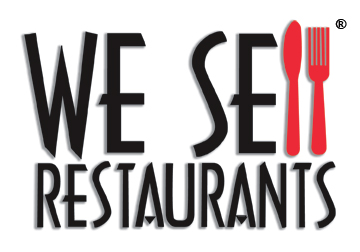
 404-800-6700
404-800-6700

